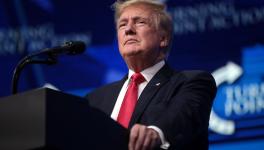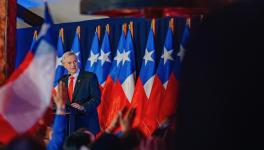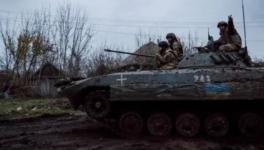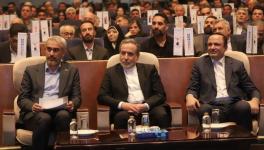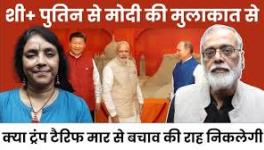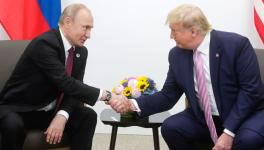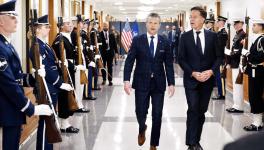Political Economy of the Conflict in Ukraine
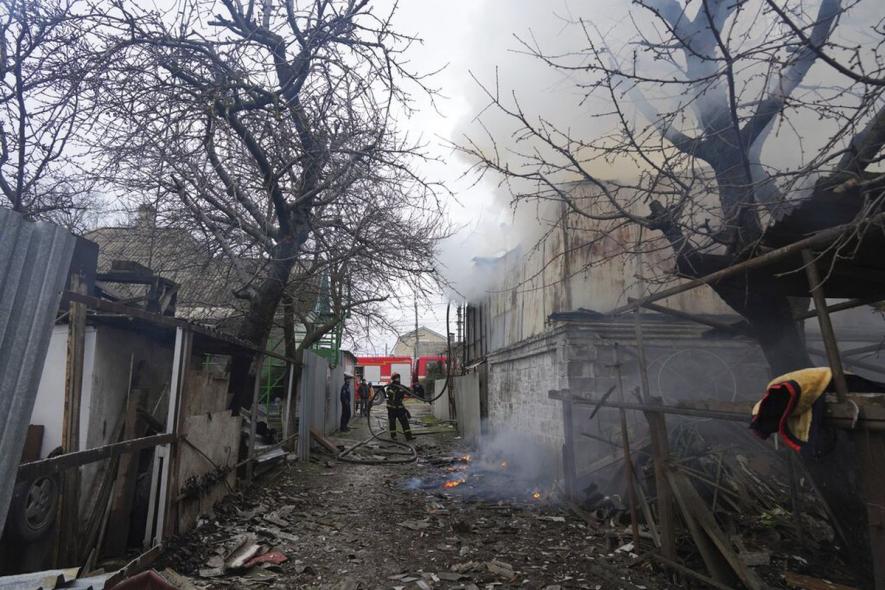
The mainstream media in India has been engaged in extensive but one-sided coverage of the conflict in Ukraine. Like all other crises, the conflict in Ukraine has several dimensions which need to be rigorously examined. In this article, we will seek to examine the political economy background to this crisis.
Since the dissolution of the Soviet Union, the North Atlantic Treaty Organisation (NATO) has been extended eastwards towards Russia in many phases in 1999, 2004, 2009, 2017 and 2020. Supporters of the “rights-based international order” argue that this expansion of NATO occurred due to “voluntary choices” of various countries of eastern Europe. However, the following points need to be emphasised when probing these “voluntary choices”. First, NATO is a “defensive” military “alliance” that is “led” by the USA. In other words, in NATO, the USA has both the first and the last word. Depending on how much strategic autonomy they can exercise, other NATO members can put in more or fewer words in the middle. Second, the re-establishment of the capitalist system, through shock therapy, in the countries of Eastern Europe led to their disarticulation from the Russian economy.
Consequently, these countries were incorporated into the world capitalist system as sources of labour supply for Western Europe and North America, producers of both primary commodities and manufactured commodities (that are relatively lower on the technological “ladder”) and an arena that is dominated by international financial corporations (especially those from Germany and USA). Therefore, the new elites of these countries (that were and are spawned by these two aforementioned processes) drove the “voluntary” entry of these countries into NATO with attenuated strategic autonomy. Thereby they became “authentic” members of the “West”.
During the same period, shock therapy in Russia led to a catastrophic collapse of the economy and a near-total evisceration of its strategic autonomy. The newly emerging class of Russian capitalists who emerged in this context were essentially concentrated in the areas of production of primary commodities and arms exports. Between 1991 and 2007-8, the “unipolar moment” came into being due to this evisceration of Russia’s strategic autonomy and persistence of the (albeit gradually narrowing) strategic breach between China and Russia. Therefore, despite assurances by the USA at the beginning of the decade of the 1990s about NATO’s eastward expansion being ruled out, the enlargement of NATO did take place.
The feeble protests of Russia at that time could not alter this outcome. This was in keeping with the USA’s strategic doctrine of trying to prevent the emergence of a group of countries in Eurasia, that working in concert, could in the future lead to the unravelling of the “unipolar moment”. Unlike other countries in Eastern Europe, Russia was not strategically right-sized to be part of the “West” and hence needed to be contained by NATO’s eastward expansion. The absence of the strategic right-sizing of Russia was manifested for instance in the political fading of the previously dominant pro-Western “liberals” in the country. Therefore the USA wanted to reinforce its stance of surrounding Russia and China with military bases (in the name of providing “security” to the neighbours of these two countries) to try and ensure that no strategic challenge to it emerged in Eurasia.
However, a turning point was reached in this process in 2008, when the USA decided to move towards “eventual” membership of NATO for Georgia and Ukraine, despite protests by Germany and France. Subsequently, there was a brief armed conflict between Georgia and Russia in 2008 that led to the stalling of Georgia’s membership process in NATO. This fresh round of planned eastward expansion of NATO was conceived by the USA at a time when it was relatively setback by the world economic crisis that began in 2007-8 and was being increasingly challenged by the rise of China. Further, the strategic breach between China and Russia had reduced below the threshold necessary for the persistence of the “unipolar moment”. Arguably, either the USA did not fully comprehend that the “unipolar moment” was on the way out or wanted to prolong it by the eastward expansion of NATO. But USA lacked the strategic wherewithal to simultaneously undertake the eastward expansion of NATO (which is a euphemism for the US plan for containment of Russia) as well as the “pivot to Asia” (which is a euphemism for the US plan for containment of China). In other words, dual containment had become infeasible.
In Ukraine too, moves towards NATO membership had interconnected internal and external drivers. Internally, moves towards NATO membership had more “support” in western Ukraine while it was not favoured in eastern Ukraine. There is a historical background to this regional divergence of views. Many parts of western Ukraine which were part of the Tsarist Russian empire were annexed by Poland in 1920-21 after a war between the Soviet government and Poland. These areas were reintegrated into Soviet Ukraine in 1939 after the defeat of Poland by Nazi Germany. During the Second World War, there was a considerable collaboration with Nazi Germany in all countries of continental Europe. This included the involvement of these collaborators in the genocidal policies of Nazi Germany in what was effectively a settler-colonial policy “on steroids” in Eastern Europe and the Nazi German-occupied part of the Soviet Union.
These genocidal policies were “best practices” since they were “perfected” based on past colonial practices in Asia, the Americas and Africa. In Soviet Ukraine, collaboration with Nazi Germany was disproportionately concentrated in the western part. Notable Nazi organisations in Ukraine were the Organization of Ukrainian Nationalists (OUN) and the Ukrainian Insurgent Army (UPA). After the defeat of Nazi Germany, the migration of many of the leaders and cadre of such criminal organisations to North America and western Europe were (directly and indirectly) facilitated by the USA. There these Ukrainian Nazis played their “due role” on the side of the USA during the Cold War.
After the dissolution of the Soviet Union, the emerging elites in both Russia and elsewhere in Eastern Europe (and Central Asia too) had perforce to “reimagine” i.e. invent the history of these countries to consolidate their rule in the new era. This happened in different ways in Russia and the rest of Europe. In Russia, the new elites attributed the heroic contribution of the Soviet Union to the defeat of Nazi Germany to ostensibly transhistorical factors while de-emphasising the role of the socialist system and (therefore) the Communist Party of the Soviet Union. The template for this “re-imagination” of history in Europe, outside Russia, was provided by the European Union which claimed that Nazi Germany and the Soviet Union were jointly responsible for the Second World War in Europe. This was the ideological starting point for the incorporation of Eastern Europe into the ambit of the “rights-based international order” and the consequent consolidation of the power of local elites within these countries.
According to this “re-imagination” Nazi collaborators such as OUN or UPA (or their predecessors and successors) were ostensibly fighting Soviet “occupation” in Ukraine from 1917 till 1991. Further in this “re-imagination”, they were “forced” to participate in some “regrettable” actions during the Nazi German occupation but this was only a “small” part of their “historic” role. After 1991, this “re-imagination” has become near-hegemonic in western Ukraine and increasingly sought to be furthered in other parts of Ukraine after 2014. While in the mainstream media, discussion of this past has been efficiently expunged since the “desired result” of this “re-imagination” namely the “reorientation” of Ukraine towards the “West” seemed within reach and could not be hampered by ostensibly historically “relics”.
In 2014, the elected President of Ukraine was overthrown in the “Orange Revolution” that was orchestrated by the USA. This led to a brief conflict with Russia. Crimea, which was transferred from Soviet Russia to Soviet Ukraine in 1954 was once again incorporated into the Russian Federation. However, this “re-imagination” of history and “reorientation” towards the “West” in Ukraine after 2014, also involves the emergence of a “new” national project where Russian speaking Ukrainians, who are disproportionately concentrated in eastern Ukraine are being otherised as “aliens”. As part of this “new” national project, these “aliens” either need to be brought into the “new Western mainstream” by snapping their links with Russia or by expelling them to Russia. No doubt, this “new” national project has drawn lessons from best practices in countries such as Britain (concerning Scots, Welsh and Irish etc.), the USA (concerning Native Americans, African Americans, Hispanic Americans etc.) concerning otherisation of those outside the “mainstream”.
This otherisation since 2014 has been led by neo Nazi Ukrainian paramilitary organisations and parties such as the Azov Battalion, Aidar Battalion, Svoboda, Right Sector etc. These neo-Nazi organisations have emerged as dominant forces in the “field” and the state machinery and armed forces of post-2014 Ukraine. Their public glorification of Nazi-era collaborators has continued despite protests including by the government of Israel. After all, the “diversity” in the “rights-based international order” is broad enough to provide space for both Zionists and neo Nazis (and some “moderate” Islamist terrorists in West Asia too) in its lower right-hand corner.
These neo-Nazi paramilitaries have been at the forefront of the armed conflict in the Donbass region of eastern Ukraine. They have been confronted by armed militias who have been supported by Russia. Initially, the opponents of the neo Nazi paramilitaries in Donbass seemed to emphasise the demand for Novorossiya as an independent entity whose legitimacy derived from ostensibly transhistorical ties to Russia. However, over time, these militias have constituted themselves into the governments of the Donetsk People’s Republic and Luhansk People’s Republic.
The Minsk Accords, which were signed by the government of Ukraine in 2014 envisaged a ceasefire in Donbass, de-escalation and a move towards federalism with autonomy for Donbass. However, a federal Ukraine is not consistent with the “yearning” (of neo Nazis in the first place) for its entry into NATO. Therefore the armed conflict in Donbass continued since the government of Ukraine did not adhere to the “one-sided” Minsk Accords which if implemented in letter and spirit would have ensured Ukraine’s neutrality between Russia and USA. This non-adherence by the government of Ukraine was driven by its curation by the USA.
In 2021, the Ukrainian government continued its incremental moves towards NATO membership under the guidance of its curators based in the USA. The Russian government demanded negotiations with the USA over two principal security guarantees: first, permanent rescinding of the NATO membership process for Ukraine and its consequent neutrality; second, return of NATO to the eastern borders of Germany. The Russian government was concerned since the USA had withdrawn from The Intermediate-Range Nuclear Forces Treaty in August 2019. This would have allowed the USA to move nuclear missiles to the western border of the territory of the Russian Federation. Given the history of repeated dishonouring of past agreements by the USA, the government of the Russian Federation did not find offers by the USA about talks about missile deployment locations credible. After all, a NATO member may “request” the USA to “protect” it from external “threats” (i.e. Russia) by deploying nuclear missiles. In which case, the “sacrosanct rules” of NATO would take precedence over “agreements” with non-NATO countries for the USA.
The USA rejected these demands for security guarantees by claiming that NATO membership is “voluntary” and the “sovereign prerogative” of each country. But it provided the fig leaf that NATO membership for Ukraine was only possible in the “distant” future. However, the USA ignored the experience of the 1960s when the USA and the Soviet Union respectively withdrew their nuclear missiles from Turkey and Cuba after a negotiated agreement. It goes without saying that if roles were reversed with the setting up of a military alliance between a neighbour of the USA and another great power then the USA would have invoked the Monroe Doctrine to initiate “effective” armed intervention within a “sound legal framework”. In the present case involving Ukraine, it is possible that the USA, in the grip of a unipolar “hangover” misjudged the relative balance of its strategic power concerning Russia. This relative balance of power moved further against the USA after the Joint Statement of the Presidents of the Russian Federation and the People’s Republic China and the consequences thereof
Germany and France through the Normandy Format process involving these two countries with Russia and Ukraine sought a negotiated settlement that would address the concerns of all countries and strike a balance between various concerns where required. However, the USA torpedoed the Normandy Format process by exercising its powers as a curator of the government of Ukraine. But the USA’s public posture to try and stall the Normandy Format process was by repeatedly claiming that “Russia would attack Ukraine no matter what” i.e. negotiations were “futile”. Given the attenuated strategic autonomy of Germany and France, they were unable to take the Normandy Format process to its logical conclusion. Though it is “understandable”, the near-total denuding of Ukraine’s strategic autonomy due to the curation process by the USA also contributed to the failure of negotiations. The intransigence of the USA, therefore, sowed the seeds for armed conflict.
C Saratchand is a professor at the department of economics, Satyawati College, University of Delhi. Views are personal
Get the latest reports & analysis with people's perspective on Protests, movements & deep analytical videos, discussions of the current affairs in your Telegram app. Subscribe to NewsClick's Telegram channel & get Real-Time updates on stories, as they get published on our website.









